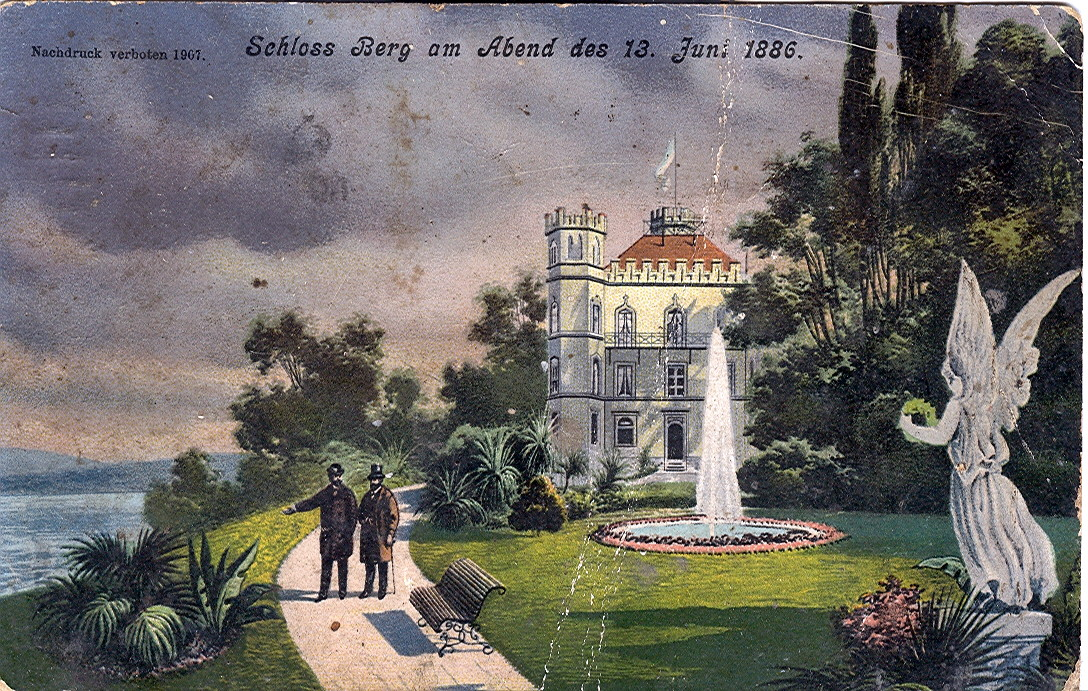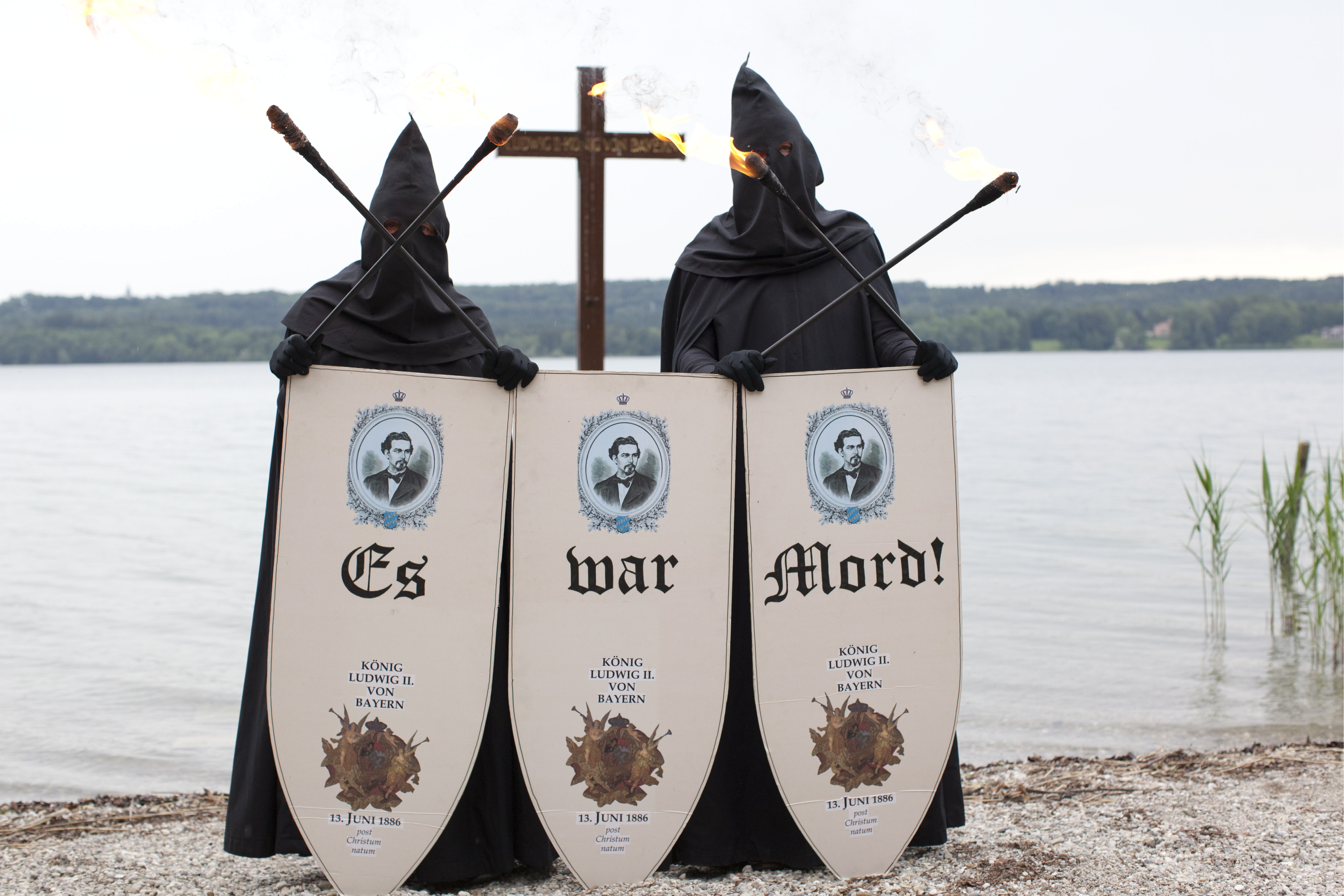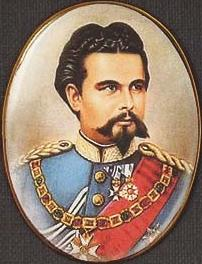June 13, 2016 marks the 130th anniversary of Bavaria’s greatest unsolved mystery: the baffling death of King Ludwig II of Bavaria. How did the fairy tale king – the builder of Neuschwanstein and the patron of Richard Wagner – die? Many Bavarians say...
If trees could talk, what stories they could tell! This stately giant watches over the path that Bavaria’s King Ludwig II walked only minutes before he died in 1886. It might be just old enough to solve Germany’s greatest unsolved mystery, if only...
It. Was. Murder! That’s what a sign held by a group of hooded men reads. It’s the battle cry of the Guglmänner, a secret society in Bavaria. It is trying to prove King Ludwig II was murdered in 1886 and thinks America might hold the clues it needs...
Germany’s Greatest Unsolved Mystery We know him as the “Fairy Tale King” and the “Swan King.” Some also call the “mad king of Bavaria,” but psychiatrists today debate whether he really was insane. He was the patron of Richard Wagner and the builder...






Recent Comments